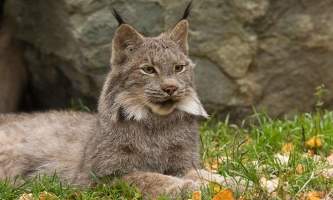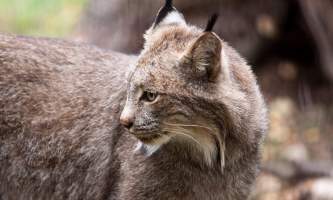Lynx
Here we are at the lynx habitat at the Alaska Wildlife Conservation Center. During certain times of the year, guests may need to be extra cautious when standing near the fence line. This is a purely hygienic recommendation, sometimes our lynx get “spray happy” and believe me when I say you wouldn’t want to be misidentified as pungent skunk when getting back into the vehicle for the ride home.
The common name for lynx in Alaska is Canadian Lynx. Males are known as “toms,” while females are referenced as “mollies.” Size varies with males reaching 35 pounds, females coming in 5 to 10 pounds smaller on average. However, their paws are their extreme distinguishing characteristic, as they can be similar in size to a 200-pound cougar, or mountain lion’s paws.
It’s the extreme size of those paws and pads that allow lynx the flexibility to go into different environments and different eco-systems in the state of Alaska. They will use those paws to be able to maneuver in water, on rock, and it will almost resemble a snowshoe in enough snowpack. With these large paws a lynx home range can exceed 1000 miles, meaning a lynx we see in Alaska may also live in Canada.
Lynx, like all felids, are obligate carnivores; they must eat meat to survive. In the wild, Canada lynx subsist heavily on snowshoe hares. The population of lynx actually coincides with the population of hare in the wild. While snowshoe hare are an abundant food source the lynx population will increase. When the snowshoe hare population is at its peak their food availability is stressed. With an increasing number of lynx eating snowshoe hares, their population will decline, and the lynx population will follow suit. This cycle continues with population growth and decline. When opportunity arises or during times of hare scarcity, lynx will also prey upon voles, ground squirrels, red squirrels, grouse, ptarmigan, foxes, and even Dall sheep and caribou.



